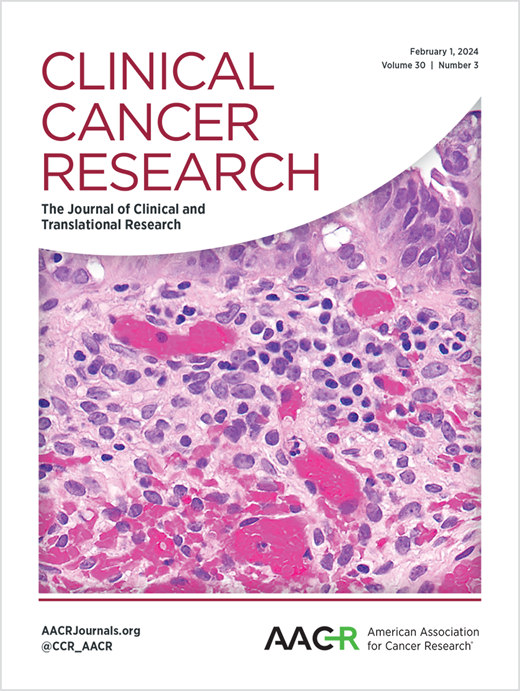Combinations of HDAC inhibitor and PPAR agonist induce ferroptosis of leukemic stem cell-like cells in acute myeloid leukemia
IF 10
1区 医学
Q1 ONCOLOGY
引用次数: 0
Abstract
Purpose: Leukemia stem cells (LSCs) are responsible for leukemia initiation, relapse, and therapeutic resistance. Therefore, the development of novel therapeutic approaches targeting LSCs is urgently needed for patients with AML. Methods: The LSCs-like cell lines (KG-1α and Kasumi-1), CD34+ primary AML cells purified from AML patients (n=23) treated with CS055 and/or chiglitazar and were analyzed for viability, death, and colony formation assay. We performed RNA-seq, Glutamate-Release, Intracellular-GSH, Lipid-ROS, transmission-electron-microscopy, Western-Blotting assay, and confirmed ferroptosis in LSCs-like cells. The luciferase-reporter, co-immunoprecipitation, HDAC3-shRNA/HDAC3/deacetylase-deficient LSCs-like cell lines, His-pull-down, and chromatin-immunoprecipitation assays performed to clarify the molecular mechanism of CS055/chiglitazar in LSCs-like cells. We also established CDX and PDX mouse models to evaluate the therapeutic efficacy of CS055/chiglitazar against-AML in vivo. Results: We report that the histone deacetylase inhibitor CS055, in combination with peroxisome proliferator-activated receptor (PPAR) pan-agonist (chiglitazar), synergistically targets leukemia stem-like cells from leukemia cell lines and patient samples, while sparing normal hematopoietic progenitor cells. Mechanistically, chiglitazar enhances the inhibitory effect of CS055 on HDAC3 and induces ferroptosis in LSCs-like cells by down-regulating the expression of ferroptosis suppressor SLC7A11. In fact, the inhibition of HDAC3 increases H3K27AC levels in the promoter region of activating transcription factor 3 (ATF3), a transcriptional repressor of the SLC7A11 gene, and upregulates the expression of ATF3. In contrast, ATF4, a SLC7A11 activator, is suppressed by HDAC3 inhibition. Conclusions: Our findings suggest that treatment with CS055 combined with chiglitazar, will target LSCs by inducing ferroptosis and may confer an effective approach for the treatment of AML.HDAC 抑制剂和 PPAR 激动剂联合诱导急性髓性白血病中白血病干细胞样细胞的铁变态反应
目的:白血病干细胞(LSCs)是白血病发病、复发和耐药性的元凶。因此,急性髓细胞性白血病患者迫切需要开发针对白血病干细胞的新型治疗方法。研究方法用 CS055 和/或 chiglitazar 治疗 LSCs 样细胞系(KG-1α 和 Kasumi-1)、从 AML 患者(23 人)中纯化的 CD34+ 原始 AML 细胞,并对其进行活力、死亡和集落形成分析。我们进行了 RNA-seq、谷氨酸释放、细胞内-GSH、脂质-ROS、透射电子显微镜、Western-Blotting 检测,并证实了 LSCs 样细胞的铁突变。通过荧光素酶报告、共免疫沉淀、HDAC3-shRNA/HDAC3/去乙酰化酶缺陷的LSCs样细胞系、His-pull-down和染色质免疫沉淀实验,阐明了CS055/chiglitazar在LSCs样细胞中的分子机制。我们还建立了 CDX 和 PDX 小鼠模型,以评估 CS055/chiglitazar 对 AML 的体内疗效。结果:我们报告说,组蛋白去乙酰化酶抑制剂 CS055 与过氧化物酶体增殖激活受体(PPAR)泛激动剂(chiglitazar)联用,可协同作用于白血病细胞系和患者样本中的白血病干样细胞,同时保护正常的造血祖细胞。从机理上讲,chiglitazar 可增强 CS055 对 HDAC3 的抑制作用,并通过下调铁变态抑制因子 SLC7A11 的表达诱导 LSCs 样细胞的铁变态反应。事实上,抑制 HDAC3 会增加活化转录因子 3(ATF3)(SLC7A11 基因的转录抑制因子)启动子区域的 H3K27AC 水平,并上调 ATF3 的表达。相反,SLC7A11 激活因子 ATF4 则会受到 HDAC3 抑制的抑制。结论我们的研究结果表明,CS055联合吉格列扎治疗将通过诱导铁变态反应靶向LSCs,并可能为治疗急性髓细胞性白血病提供一种有效的方法。
本文章由计算机程序翻译,如有差异,请以英文原文为准。
求助全文
约1分钟内获得全文
求助全文
来源期刊

Clinical Cancer Research
医学-肿瘤学
CiteScore
20.10
自引率
1.70%
发文量
1207
审稿时长
2.1 months
期刊介绍:
Clinical Cancer Research is a journal focusing on groundbreaking research in cancer, specifically in the areas where the laboratory and the clinic intersect. Our primary interest lies in clinical trials that investigate novel treatments, accompanied by research on pharmacology, molecular alterations, and biomarkers that can predict response or resistance to these treatments. Furthermore, we prioritize laboratory and animal studies that explore new drugs and targeted agents with the potential to advance to clinical trials. We also encourage research on targetable mechanisms of cancer development, progression, and metastasis.
 求助内容:
求助内容: 应助结果提醒方式:
应助结果提醒方式:


